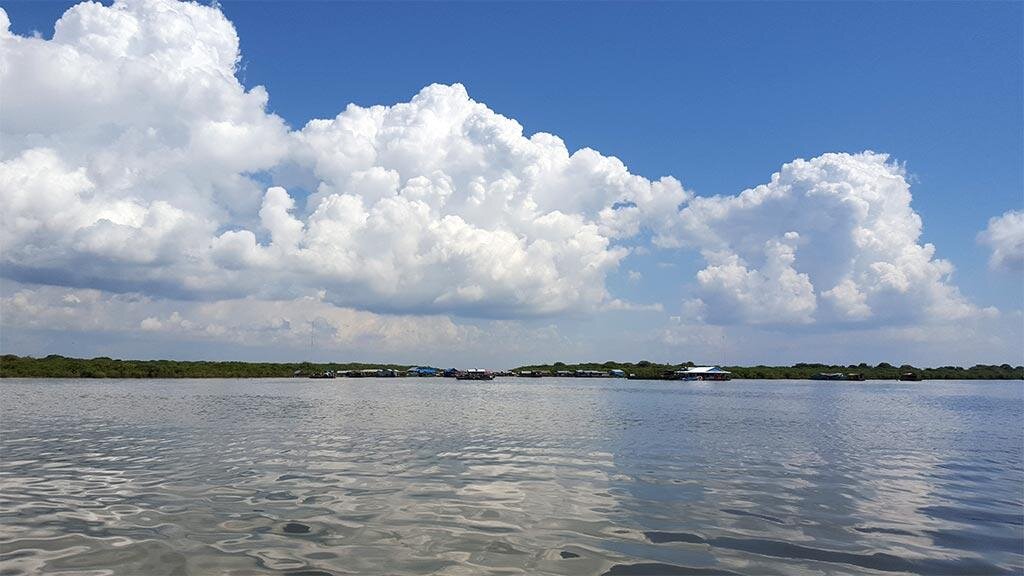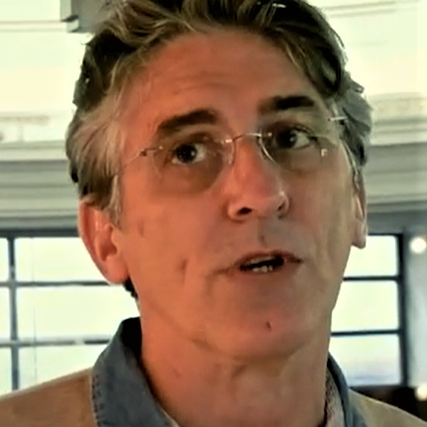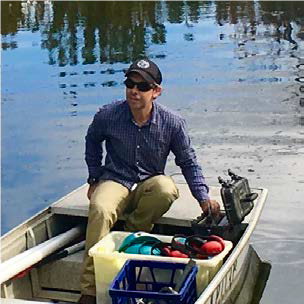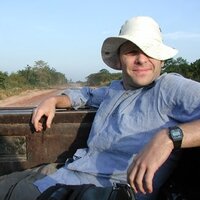Unearthing an Atlantean Myth in Angkor
by Christophe Pottier & Dan Penny & Mitch Hendrickson
Unearthing an Atlantean myth in Angkor: geoarchaeological investigation of the ‘underwater road’ crossing the Tonle Sap Lake

Publication: Journal of Archaelogical Science, 39, pp 2604-11 | doi.org/10.1016/j.jas.2012.04.005
Published: 2012
Authors: Christophe Pottier, Dan Penny & Mitch Hendrickson
Pages: 8
Language : English
Foundation myths of Angkor appear at various times, from the union of the Naga princess and an Indian prince marking the foundation of Angkorto the construction of Angkor Wat by the semi-divine architect Pisnoukar and his magical powers, or the 19th century Cambodian tradition that the great temples of Angkor were built by giants. Other modern myths appeared during the 20th century, like the presence of underground labyrinths within the Terrace of Leper King, and the universal paving of the Angkor’s roads.
Proliferation of scientific research in Cambodia over the past decade has now clarified some of these myths. However, one pervasive ‘memory’, sustained by generations of local Khmer fishermen since the start of the 20th century, is a road built across the Tonle Sap or ‘Great Lake’, linking the capital to the rich rice growing lands on its southern shore.
The Tonle Sap is a large mesotrophic, polymictic freshwater lake that, under the influence of monsoon related flooding in the Mekong River, increases in area from approximately 2,500 km2 to approximately 15,000 km2, in volume from 1.3 km3 to more than 60 km3 (see Fig. 1) and in depth from <1 m to 7-9 m.
According to the authors, 'historically, the myth became an archaeological question when the French protectorate was developing its terrestrial network throughout Cambodia, even if primary communication at that time relied on the riverine system. From this perspective, it is now time to draw to a close more than a century of speculation and opportunistic research of this ‘Atlantean’ myth.'
The fourth co-author was E. A. Carter, researcher at the Vibrational Spectroscopy Facility, School of Chemistry, University of Sydney, NSW 2006, Australia.
Photo by Sarah Rhodes, siemreap.net.
Tags: Tonle Sap, mythology, roads, navigation
About the Authors

Christophe Pottier
Christophe Pottier (1966, Mayenne, France) is an archeologist and architect who worked with EFEO mission to Angkor from 1992 till 1999. Previously, he was involved in the restoration of the Khmer temple of Phanom Wan in Thailand, and the indexation of the Angkor related documentation preserved in the EFEO archives in Paris, under the direction of Bruno Dagens.
Assisting the Conservation of Angkor, Christophe Pottier took part in the restoration of the Terrace of The Leprous King (Angkor Thom), a vast effort left unfinished in 1973 when the Khmer Rouges stopped all conservation activities in Angkor. Later on, he Christophe Pottier directed the restoration of the northern staircase at the Terrace of the Elephants, completed in March 1999.
Head of the EFEO Siem Reap center at the start of the 2000s, he contributed to the identification of several hundreds new sites in the area of Angkor, which allowed him to reconsider settlements patterns and densities and to reassess ancient spatial layouts and organisations, which underline and specify the concept of territory in the Angkorian "cities". This research continues since in the northern area of Angkor.
In addition, Christophe Pottier has headed since 1999 the Cambodian-French Archaeological Mission on the Angkor Region. He is associated since 2000 with the Greater Angkor Project led by Prof. Roland Fletcher, focusing on the spatial and chronological understanding of the decline and fall of Angkor as a center of power. Also, with R.K. Chhem (Western Ontario Univeristy) and A. Kolata (Chicago University), he initiated in 2005 a new Angkor Medieval Hospitals Archaeological Project.

Dan Penny
An associate Professor of Geosciences at University of Sydney, NSW, Australia, Dan Penny researches environmental histories.
His work ranges from environmental histories of the global tropics, particularly mainland Southeast Asia (with numerous works on Cambodian medieval cities including Angkor) and central America, through to Australian based environmental reconstructions, applying expertise in palaeo-botany and sedimentology to document the response of ecosystems to climatic variability and human activities over long periods of time.

Mitch Hendrickson
Associate Professor at the UIC-Department of Anthropology (Chicago, USA), researcher at the Department of Archaeology, University of Sydney, Australia, Mitch Hendrickson is a landscape archeologist active on various Angkorean sites.
He is the Director of Industries of Angkor Project, Co-Director of the Two Buddhist Towers Project and the Iron and Angkor Project.
